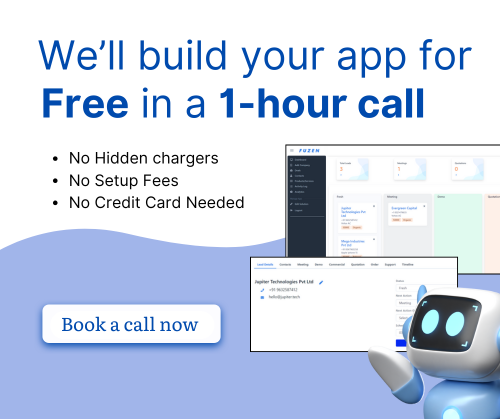Open Source Construction Management Software
Open source construction management software is a type of software where the source code is available for anyone to inspect, modify, and enhance.
Unlike proprietary solutions, open source software is typically free to use and customize. This gives users the flexibility to tailor the software to their specific needs without the high costs associated with proprietary licenses.
The construction industry has been witnessing a growing trend towards incorporating open source solutions. This shift is partly due to the need for more adaptable and cost-effective tools. As more companies seek personalized software to fit their unique workflows, open source provides an attractive alternative to traditional closed-source options.

There are several benefits to using open source tools in construction management:
- Cost-Effective: Most open source software is free, reducing the overall project expenses.
- Customizable: Users can modify the software to better fit their processes and requirements.
- Community Support: Open source projects often have active communities that provide support, share knowledge, and contribute to further developments.
- Transparency: With accessibility to the source code, users can audit the software for security vulnerabilities and ensure compliance with industry standards.
But that said, there are also some drawbacks to using an open source software.
- Either you need to know coding or you need to find programmers to customize the software for you.
- Support can be hard to come by - you will be dependent on community support, which will normally be beyond your control.
Key Features to Look For in Open Source Construction Management Software
When choosing open-source construction management software, you need to know what features are essential. Let's dive into some key aspects that can make or break your software experience.
- Project Scheduling: Managing timelines is crucial. Look for software with robust scheduling tools. They help you track milestones and ensure timely project completion.
- Document Management: Construction involves heaps of documents. Choose software that organizes and stores them efficiently. Good document management enhances collaboration and reduces errors.
- Cost Estimation: Budgeting projects can be complex. Effective cost estimation tools simplify this process. They provide accurate forecasts and monitor expenses as they happen.
- Integrations: Your software should connect with other tools seamlessly. Integrations with accounting, design, and communication platforms streamline operations and improve productivity.
- Scalability: As projects grow, your software should adapt. Scalability ensures the software can handle increased data and complexity. This flexibility is vital for long-term use.
- Customization Options: Every project has unique needs. Open-source software often allows customization. You can tailor the software to match your processes and requirements.
These features will significantly impact your project management efficiency. Choose wisely to optimize operations and support your team.
Benefits of Open Source Construction Management Software
Open source construction management software offers several advantages over traditional proprietary software. Let’s explore some of the key benefits:
- Cost-effectiveness and reduced total cost of ownership: Open source software is usually free to use. It reduces the need for expensive licenses, helping construction companies save money.
- Enhanced flexibility and freedom to modify: With open source, you can modify the software to fit your specific project needs. This flexibility allows for better customization and adaptation.
- Community support and regularly updated features: Open source projects benefit from vast community support. Developers and users collaboratively work to add new features and fix bugs, ensuring the software remains up-to-date.
- Long-term usability and avoiding vendor lock-in: Open source solutions offer long-term usability. You are not tied down to a single vendor, reducing risks associated with vendor lock-in.
Top Open Source Construction Management Software Solutions
Open source construction management software can be a game-changer. You get flexibility without breaking the bank. Here's a list of leading open-source tools you should know about.
1. Odoo
Odoois more than a construction tool. It's a full-suite ERP. However, with its construction module, it provides strong project management capabilities. It's best for businesses looking for a multi-purpose solution.
Pros: Integrates well with other business functions.
Cons: May be too complex if you only need construction management tools.
User Testimonial: "Odoo's flexibility allowed us to streamline our operations, not just in construction." - Tim Y., Operations Manager
2. Redmine
Redmineis a project management web app that some companies tailor for construction management. It's not specialized for construction but provides excellent customization options.
Pros: Customizable, easy to expand functionality with plugins.
Cons: Setup requires technical expertise.
User Testimonial: "Redmine gave us the flexibility we needed. Just a bit of a learning curve to get started." - Alex G., IT Specialist
Challenges and Considerations
When opting for open-source construction management software, there are a few challenges to keep in mind. These can range from technical expertise for setup to handling data security.
- Technical Expertise and Initial Setup: Most open-source solutions require a certain level of technical know-how. You might need in-house technical skills or third-party support for initial setup and customization.
- Data Security Concerns: Since you handle sensitive project data, it's essential to ensure robust security measures. Regular updates, security patches, and data encryption are crucial steps to protect your information.
- Long-Term Maintenance and Support: Open-source software typically doesn't come with a dedicated support team. You'll need to stay on top of updates and potentially participate in community forums for troubleshooting or rely on external help for maintenance.
Weigh these considerations carefully to make sure open-source solutions align with your organization's capabilities and needs.
How to Choose the Right Open Source Construction Management Software for Your Business
Selecting the right construction management software can make a huge difference in your project outcomes. Here's a step-by-step guide to help you make the best choice for your business:
- Identify Your Needs: Start with a clear understanding of your company’s specific needs. Consider aspects like project size, team collaboration, and budget constraints.
- Research Features: Look for software that offers the features aligning with your requirements. Check for essential tools like project scheduling, resource management, and document sharing.
- User-Friendliness: Opt for software that is easy to navigate. Your team should find it intuitive to use without extensive training. A clean interface speeds up the adoption process.
- Community and Support: Open source software often comes with an active community. A vibrant community means better support and regular updates. Check forums and user groups.
- Consider Scalability: Choose software that grows with your business. Flexibility is key, so pick a solution that can handle increasingly complex projects over time.
- Evaluate Costs: Even open source software can have associated costs. Review any potential expenses for customization, support, or additional features.
- Use Demos and Trials: Take advantage of demos and free trials. These help you see firsthand how the software performs and fits your workflow. Don’t skip this step!
- Gather Feedback: Involve your team in the trial process. Their feedback is crucial in assessing the software’s practicality and efficiency.
By following these steps, you can confidently select construction management software that truly meets your business needs.
Is There Any Better Alternative To Using Open Source Construction Management Software?
Open source software packages may be great for many use case. But construction project management is a different ball game.
- For construction companies, their expertise lies in the construction business and not in software development. So building your own customized open source construction management software may prove to be a headache. This is specially true for smaller construction contractors.
- Using an open source software still requires you to make changes to it by writing code. For that reason, first you need to find developers who are capable to make changes. And secondly, it still takes a lot of time.
- Maintaining your customized variant of open source software will be challenging, since you will need to call upon software developers whenever you need to make any small changes.
- A nocode platform like Fuzen.io can be a better alternative for building your construction management software, since it offers all the benefits of open source software without the drawbacks.

Conclusion: Is Open Source Construction Management Software the Right Choice for You?
Open source construction management software offers some strong advantages. It is cost-effective and highly customizable. It can adapt to specific needs and integrates well with other tools. However, it may present challenges like limited support and the need for technical expertise.
A better alternative would be a nocode platform like Fuzen.io where you still get all the flexibility at very low costs.
Fuzen comes equipped with hundreds of app templates that you can use as a starting point to build your customized construction management dashboard.
For example, this video shows you how to build a project management app without coding -

